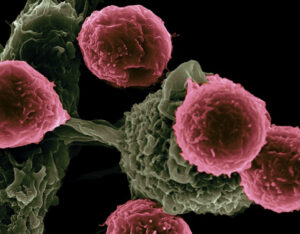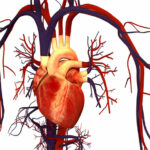THE DREADED C WORD

It’s likely that nearly all of us have a relative or friend who has had a diagnosis of cancer, if not ourselves. As a woman, I know I have a 1 in 8 chance of developing breast cancer – very high stakes in anybody’s terms. Indeed, breast cancer is the leading cause of cancer-related deaths among females worldwide.
How common is cancer?
Cancer is a major killer, second only to cardiovascular disease, with more than 23 million new cases and 10 million deaths reported worldwide in 2019. These statistics are 20-25% higher than in 2010 (1).
Lung cancer is still the leading cause of cancer deaths in over 100 countries for males, and nearly 30 countries for females. Together, cancers of the lung, breast, liver, colon (large intestine) and stomach accounted for most years lived with ill health and disability.
The good news is that treatment and survival have improved markedly in high income countries over the past 20-30 years. Sadly, however, many low income countries are continuing to see a rise in deaths from cancer.
Prevention
What about preventing cancer developing in the first place? Are there simple, inexpensive steps we can all take to reduce the odds? Specifically, what foods can we eat (or avoid) to reduce the odds?
One certainty is that being overweight or obese and/or having type 2 diabetes increases the likelihood of developing cancer at one or more of a dozen sites around the body. This includes common cancers of the breast, colon, kidney, thyroid and endometrium (uterus). If you’re carrying excess fat, losing just 5% will make a huge difference. The mechanism by which this happens is hotly debated.
Many experts point the finger at insulin – the key hormone that controls levels of glucose in the blood. Increasing body fat tends to increase blood glucose, insulin, and inflammatory factors that contribute to promoting the growth of tumours (cancers). Factors influencing glucose metabolism play important roles not only in the development of cardiovascular disease (e.g., heart disease and stroke) and type 2 diabetes, but also in other chronic diseases including polycystic ovarian disease (PCOS) and some cancers. In 2020, scientists reported that elevated glycated haemoglobin (HbA1c: a marker of average blood glucose levels in the preceding 12 weeks) was associated with higher risk of cancers of the colon, liver, gall bladder and lung cancer in smokers (2). For this reason, it is not so surprising that both the quantity and the type of carbohydrate consumed can influence the risk of these diseases (3, 4).
Insulin itself acts as a growth factor but also accentuates the activity of insulin-like growth factors (IGFs), i.e., small circulating molecules that promote normal growth as well as malignant growth. IGF-1 promotes tumours by inhibiting the process of programmed cell death (apoptosis) and by stimulating cell proliferation (growth). IGF-1 also has angiogenic proprieties, i.e., stimulating the growth of the blood vessels that feed tumour growth (5). And factors that increase insulin secretion activate the same signalling pathways as some of the most common genetic mutations in cancer.
GI, GL and cancer
Chronically elevated blood insulin – as a result of chronically high blood glucose or insulin resistance – is thought to be the underlying mechanism for why the glycemic index of foods and the glycemic load of the whole diet has been linked to increases in the risks of several cancers (3).
Several systematic reviews and meta-analyses have been devoted to the subject of GI and cancer. As early as 2008, scientists in Italy reported on 39 studies, concluding that both dietary GI and GL were linked to a 26% increase in relative risk of colorectal (large intestine) cancer and a 36% increase in risk of endometrial (uterine) cancer (6).
In 2016, scientists in France reported a small but significant (~5%) increase in risk of breast cancer among people consuming a high GI or GL diet (4). In men, GI but not GL, was linked to a small increase in risk (+8%) of prostate cancer.
If you are keen to learn more about the relationship between dietary GI, glycemic load and cancer, we recommend three recent comprehensive reviews of the scientific literature:
- Sieri and Krogh. Nutr Metab Cardiovasc Dis. 2017 (2).
- Sadeghi et al. Nutr Cancer. 2020 (7).
- Turati and colleagues. Nutrients. 2019 (8).
Finally, it is true that observational studies cannot prove cause-and-effect, i.e., we cannot say that a high GI/GL diet causes cancer. However, it is not realistically or ethically feasible to conduct randomised controlled trials where one group receives an intervention and another group serves as a control with respect to cancer. But the weight of evidence tells us that reducing the GI and/or GL of the diet is likely to be a healthy way to improve our likelihood of a long and healthy life.
Read more:
- Kocarnik and colleagues. Cancer Incidence, Mortality, Years of Life Lost, Years Lived With Disability, and Disability-Adjusted Life Years for 29 Cancer Groups From 2010 to 2019: A Systematic Analysis for the Global Burden of Disease Study 2019. JAMA Oncol. 2021
- Sieri and Krogh. Dietary glycemic index, glycemic load and cancer: An overview of the literature. Nutr Metab Cardiovasc Dis. 2017.
- Peila and Rohan. Diabetes, Glycated Hemoglobin, and Risk of Cancer in the UK Biobank Study. Cancer Epidemiol Biomarkers Prev. 2020
- Mullie and colleagues. Relation between Breast Cancer and High Glycemic Index or Glycemic Load: A Meta-analysis of Prospective Cohort Studies. Crit Rev Food Sci Nutr, 2016
- Clayton and colleagues. Growth hormone, the insulin-like growth factor axis, insulin and cancer risk. Nat Rev Endocrinol. 2011.
- Gnagnarella and colleages. Glycemic index, glycemic load, and cancer risk: a meta-analysis. Am J Clin Nutr. 2008
- Sadeghi et al. Dietary Glycemic Index and Glycemic Load and the Risk of Prostate Cancer: An Updated Systematic Review and Dose-Response Meta-Analysis. Nutr Cancer. 2020
- Turati and colleagues. Glycemic Index, Glycemic Load and Cancer Risk: An Updated Meta-Analysis. Nutrients. 2019
Professor Jennie Brand-Miller holds a Personal Chair in Human Nutrition in the Charles Perkins Centre and the School of Life and Environmental Sciences, at the University of Sydney. She is recognised around the world for her work on carbohydrates and the glycemic index (or GI) of foods, with over 300 scientific publications. Her books about the glycemic index have been bestsellers and made the GI a household word.








